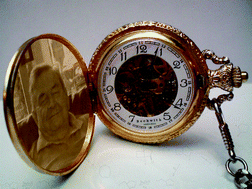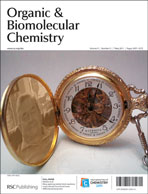The ability of several density-functional theory methods to describe the kinetics and energetics of a series of ring-opening reactions of cyclopropyl and cyclobutyl-type radicals was explored. PBE, B971 and B3LYP perform quite well in their ability to replicate experiment, based upon the ring opening of cyclopropylcarbinyl, two α-trialkylsilyloxycyclopropylmethyl radicals, pentamethylcyclopropylcarbinyl, cyclobutylcarbinyl and 1-cyclobutylethylcarbinyl. The other functionals tested, which includes BLYP, CAM-B3LYP, BHandHLYP, B2PLYP and B2PLYP-D, as well as functionals designed for kinetics applications, namely MPW1K, BMK and M06-2X, all perform poorly. The latter of these functionals display some integration grid dependencies.
You have access to this article
 Please wait while we load your content...
Something went wrong. Try again?
Please wait while we load your content...
Something went wrong. Try again?


 Please wait while we load your content...
Please wait while we load your content...